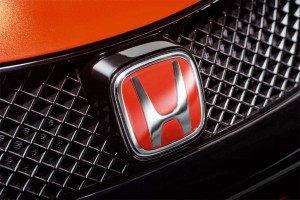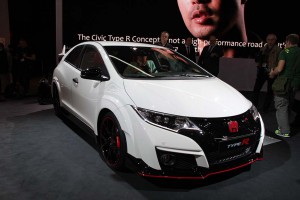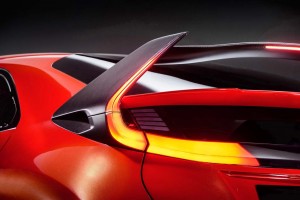Getting over to Switzerland for the annual Geneva Motor Show can be a wonderful experience checking out all the latest sheet metal. But there’s a downside when you discover a hot new model that won’t be coming back home.
Such is the case with the new Honda Civic Type R, a pint-sized performance car likely to set hearts to flutter for many U.S. buyers.
How fast is it? Honda is claiming that a prototype version lapped grueling North loop of the Nurburgring in just 7:50.63, about four seconds faster than the previous record for a front-drive car set last year on the Nordschleife by a Renault Megane RS. If you focus on launch times, it reportedly can launch to 100 kmh, or 62.5 mph, in 5.7 seconds.
To pull that off, Honda has given the Civic Type R one of its new Earth Dreams powertrains, in this case, a turbocharged 2.0-liter inline-four making 306 horsepower and 295 pound-feet of torque – power to the pavement coming through a six-speed manual gearbox.
No wonder Honda insiders have been referring to the RS as a “racing car for the road.” Sadly, for European roads, though the turbocharged 2.0-liter engine is expected to show up in at least some Honda product – or products – in the next several years. The maker has been working on other, smaller turbo Earth Dreams packages, as well.
(Honda CEO ousted amidst airbag woes. Click Here for the full story.)
The Civic Type R is more than just a muscle car, as the record run around the Nurburgring was meant to establish.
You won’t easily confuse the Type R for a more mundane version of the Civic, not with that huge rear wing meant to keep it planted firmly on the ground. It gets an oversized rear, as well as a front splitter, rear diffuser and deeper side skirts, all meant to control wind flow.
The new Civic Type R also features adaptive dampers and the suspension has been tuned to minimize the torque steer that normally plagues high-power front-drive cars.
Keeping the car pointed where you want to go is always a challenge when the front wheels do all the work, one key reason why Ford Motor Co. decided to switch to all-wheel-drive for its all-new Focus RS model, a likely key competitor to the new Honda Civic Type R.

Honda has no plans to bring the Type R to the US, though its turbo 2.0-liter engine could find other uses.
On the plus side for the Japanese maker, it doesn’t have to compensate for the traditional understeer of an all-wheel-drive layout. Ford has had to come up with a complex new AWD system that uses torque vectoring and other tricks to get the Focus RS to point and shoot.
(Click Here for a look at the all-new Ford Focus RS.)
The Civic Type R rides on wide, 20-inch wheels pinstriped in red. They barely conceal Brembo brakes and the little car’s adaptive damping system.
Other body tweaks include new LED daytime running lights and horizontal fogs. Inside, there are bolstered sport seats to help keep occupants firmly plants during aggressive maneuvers.
The new Honda Civic Type R is set to go on sale later this year. In Europe. Leaving Americans to feel frustrated unless they can find a way to get the Japanese maker to change its mind.
(Click Here for complete 2015 Geneva Motor Show coverage.)



FYI – Any vehicle that powers the front wheels can experience understeer by virtue of the fact that you are asking the front tires to both steer and drive the car forward. Since a tire will provide “X” amount of traction, when you ask it to provide traction in both a longitudinal and lateral direction concurrently, the maximum lateral cornering force for the tire is lowered by whatever force you use for forward thrust.
That means all FWD or AWD vehicles will have a lower front lateral cornering force when applying forward thrust (or braking forces) compared to the lateral force they can generate in just a steady state turn without forward (or braking) thrust.
A similar situation applies to RWD cars when you try to accelerate in a turn. The lateral force is reduced causing oversteer as you try to accelerate. Balancing the handling characteristics is both art and science.
The understeer can be offset by torque vectoring and wheel stiffness rates, etc. but the bottom line is the lateral cornering force will always be reduced from the total potential cornering force if there is drive thrust applied to a wheel that is used to steer the vehicle.